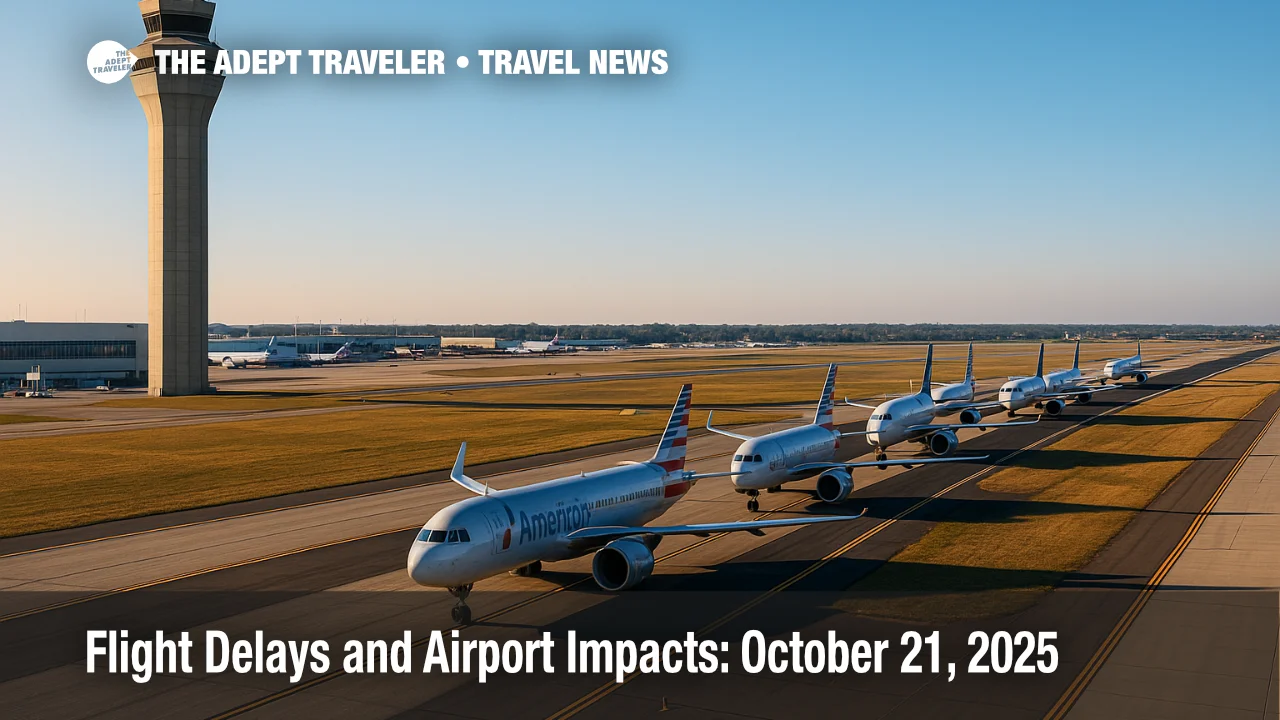Flight delays and airport impacts: October 22, 2025

Key points
- BOS ran a daytime ground delay program
- NY terminals flagged for possible spacing
- SFO held for potential morning program
- West Coast launch window added reroute airspace
- No national AFPs were planned
The FAA's daily plan kept a ground delay program active for Boston Logan International Airport (BOS) as low ceilings and runway work constrained arrivals. New York terminals were flagged for potential spacing actions as winds and ceilings varied through the day, while San Francisco International Airport (SFO) faced the prospect of a late-morning hold if marine layers lingered. On the West Coast, a Vandenberg Space Force Base launch window created temporary offshore airspace closures that prompted minor reroutes. No nationwide airspace flow programs were planned, so most impacts were regional and time bound.
FAA operations plan
The current operations plan listed no active or planned national airspace flow programs, but it did highlight a continuing Boston ground delay program. The plan also detailed commercial launch activity: a Starlink mission from Vandenberg Space Force Base with a primary window from 900 a.m. to 324 p.m. Central Time, plus additional Florida and California windows later this week. These operations intermittently close small blocks of offshore airspace and can change preferred routes for West Coast traffic.
Latest developments
The National Airspace System dashboard showed BOS, LaGuardia Airport (LGA), and SFO as "possible" for ground stop or delay programs during the late morning and early afternoon, depending on ceiling trends and runway configurations. No national constraints appeared on the list view, and airspace flow programs remained off the board. Travelers connecting via New York should watch for miles-in-trail spacing and compression delays during peak arrival banks.
Analysis
Expect Boston's delays to ease once ceilings lift and the field can use more efficient runway pairings. New York delays are most likely to show up as arrival spacing rather than full programs, which still pushes tight connections into risk territory. West Coast flyers may notice a few minutes of airborne rerouting around launch airspace, but wholesale cancellations are unlikely when national programs are idle. Build a 60-minute cushion for BOS, LGA, Newark Liberty International Airport (EWR), and SFO today. If your first leg slips, rebook earlier rather than hoping a short connection holds.
For broader context on how controller staffing is interacting with weather-driven programs this week, see our related coverage, Shutdown hasn't spiked delays, but FAA staffing is a risk. If you are Caribbean-bound later this week, monitor potential convective delays as the disturbance we tracked continues to evolve, Caribbean disturbance could become Tropical Storm Melissa.
Final thoughts
October 22 brought a familiar pattern, with Boston's program leading, New York poised for spacing, and San Francisco watching morning marine layers. With no national flow programs planned, delays clustered at a few hubs. Add buffer time, keep alerts on, and verify gates as you navigate flight delays and airport impacts.
